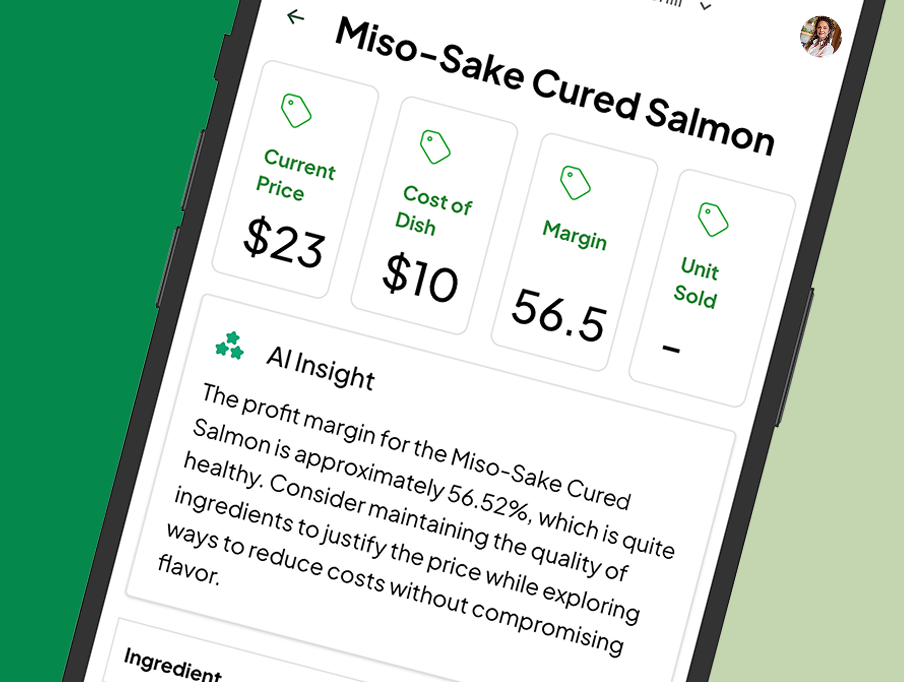Let’s be real—no one opens a restaurant because they love spreadsheets.
You do it because you love food, hospitality, creating a space where people gather and leave happy. But somewhere between hiring your first line cook and managing your fifth double shift in a row, you realize that running a restaurant means living and breathing your labor costs.
And they’re relentless.
Labor is likely your second-largest expense—sometimes your first if you’re running lean on food costs. But here’s the catch: labor is also your most human expense. These aren’t just numbers; they’re your prep team, your closers, your lifers, your last-minute call-ins. You can’t just slash hours and expect the dining room to run itself.
So how do you keep your labor costs in check without sacrificing service or burning out your staff?
At MRGN, this is exactly the problem we help restaurants solve every day. We’re a platform built to help businesses (especially restaurants) manage their finances without a CFO or accounting team. And when it comes to labor, we’ve seen time and again how keeping tabs on just a few key metrics can change the game entirely.
Let’s dig in.
Why Labor Costs Matter More Than You Think
Picture this: your Friday night service is slammed, the kitchen’s firing on all cylinders, and your bar’s three deep. Feels like a win, right?
But when you look at the numbers on Monday, you realize that between overtime, an extra host you didn’t need, and two servers who stood around for hours, that high-revenue night didn’t actually generate the profit you expected.
This is the labor cost trap—when high sales mask the fact that you’re spending too much to make it happen.
Restaurants run on razor-thin margins. If your labor creeps up just a few percentage points beyond industry norms (usually 28%–35% of sales), it can quietly bleed your profits dry over the course of a year.
And unlike food costs, which fluctuate but are tangible (you can literally hold a case of avocados in your hand), labor costs are more slippery. They’re made of time, people, and decisions. And they’re easy to ignore—until you can’t.
What You Should Actually Be Tracking
We get it: the last thing you want is more data for the sake of data. That’s why we’re big fans of keeping it simple.
There are three metrics we think every restaurant should track if they want to get serious about profitability without becoming a spreadsheet zombie:
1. Labor Cost Percentage: Formula: (Labor Costs ÷ Sales) x 100
This one is your north star. It’s the total labor cost (wages, taxes, benefits, the whole package) divided by total sales. You want this to stay under control week to week—not just at the end of the month when it’s too late to fix.
If you’re consistently above 35%, it’s worth digging into why. Are you overstaffing during lunch? Are people clocking in too early or dragging out closing?
2. Sales Per Labor Hour (SPLH): Formula: Sales ÷ Total Labor Hours
This is a killer metric to understand team efficiency. It tells you how much revenue you’re generating for each hour of labor. When it drops, you’re likely overstaffed or underperforming.
High SPLH? You’re cooking. Low SPLH? Time to look at your shift structure.
3. Overtime Hours
Overtime should be an exception, not the rule. If you’re seeing overtime week after week, it could be a sign of bad scheduling, poor communication, or not enough staff on the roster to begin with.
Track it. Understand who’s racking up those hours. Sometimes hiring one more part-time employee can save you thousands in the long run.
Okay, But What Can You Do About It?
Let’s get practical. You don’t need a finance degree to optimize your labor—you just need better visibility and a few good habits.
Forecast Better
Look ahead, not just behind. Use your sales history, seasonal trends, and even weather forecasts to predict demand and staff accordingly. This is where MRGN steps in: we help you model out different staffing scenarios so you can say, “What happens if I add another line cook on Fridays?” before actually spending the money.
Rethink Scheduling
Stop setting it and forgetting it. Your schedule should flex with real-time data. If sales tanked last Tuesday, maybe this week you trim a shift. If your weekends are consistently understaffed, it’s time to scale up—intentionally.
Set Shift Goals
Your staff can’t read your mind. Let them know what success looks like: sales targets, upsell goals, ticket times. When expectations are clear, teams tend to rise to meet them—and wasted hours drop.
Keep Your Team
Turnover is expensive. Like, really expensive. Recruiting, training, slower service—it adds up fast. Investing in retention (even with small things like free meals, birthday shoutouts, or giving people their preferred days off) can pay off tenfold in labor stability.
Labor Costs Aren’t the Enemy—They’re the Signal
Here’s the shift in mindset we’d love to see across the industry: labor isn’t just a cost to control. It’s a signal—of how healthy your operations are, how happy your staff is, and how sustainable your business model really is.
If your labor costs are high, it doesn’t always mean you need to cut. It might mean your kitchen process is broken. Or your pricing needs to be reworked. Or your POS system is slowing everyone down.
That’s why we built MRGN to look at the big picture—not just to say “cut here,” but to help you see what’s really driving those costs.
You Don’t Need to Be a Finance Pro
If you’ve made it this far, here’s the good news: you already care more about labor metrics than 90% of restaurant owners. That’s half the battle.
The other half? Having a tool that helps you track, model, and plan without needing a CFO to interpret it for you.
That’s us. MRGN is here to make restaurant financials feel less like a black hole and more like a GPS. Not just where you are—but where you’re headed, and what to do next.
You don’t have to make gut decisions anymore. You can make smart ones, backed by data, and still get back to what you love—running your restaurant, your way.





